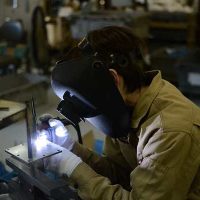Planning a weldment seems easy, but people often make numerous risky mistakes. Before planning, cost estimation, or production, you have to find out the condition of your metal, the thickness of the material, and the position of the parts. Remember, welding should be in a flat arrangement so ensure their position before starting a job.
These elements can affect the process and electrode type. Make sure to get familiar with the different wires and electrode types. For a perfect weld, these things are essential. Unfortunately, plant engineers, production planners and managers, quality control department, and cost estimators ignore the importance of these factors.
Hire a Certified Welder
Remember, these jobs need a certified welder to bring perfection and avoid possible issues. Welding jobs are gradually increasing. Numerous industries need welders, such as vehicle assembly, manufacturing, aerospace, oil refineries, pipelines, construction, drilling, military support, and oil refineries. For this reason, numerous certified welders are accessible in the market. Different certification programs are available for potential welders to help get certified.
Pay Attention to Transfer Modes
Weldment involves four basic transfer modes: pulsed spray, spray, globular, and short circuit. The selection of a transfer mode may depend on the process of welding, consumable, and power supply. Every mode has its applications and characteristics.
Globular Transfer
This mode allows you to transfer weld metal across the curve in one gravity feed. Remember, the diameter of the droplets is larger than the electrode. With this transfer, it is not possible to produce a smooth bead appearance. You can expect some spatters in the weld.
Short Circuit
In this transfer, the wire touches the base metal or short circuit many times in a second for electrical contact. It can produce some spatter. Feel free to use it in different welding positions and thicknesses of steel.
Spray Transfer
This transfer requires you to spray small molten droplets crossways the arc. Droplets are smaller than the diameter of a wire. It needs high voltage and wire amperage or feed speeds.
Pulse Spray
It is a variation in spray transfer via cycles or pulses of the welding machine. The output can be different between low background currents and high peak currents. In the background cycle, the weld pool may cool slightly to change the result.
Tips to Choose the Perfect Transfer Mode
Transfer modes can affect the cost of welding. A transfer mode may vary between travel speed, heat input, and cleanliness. Globular and short-arc transfer modes can create splatters because of flux-cored and solid wires. It requires you to spend time on post-weld cleaning. Moreover, these modes may waste filler metal that can affect the efficiency of electrodes.
Spray transfer may add heat to your base material because of higher voltages and amperages. It can increase the chances of deformation and warping the plate. Moreover, the risk of burn-through because of the thin base material is also possible. The higher voltages and amperages may allow you to achieve greater travel speeds and deposition.
In short, every transfer mode has different characteristics. Each transfer mode may support different cycle times based on the settings and the type of electrodes.


